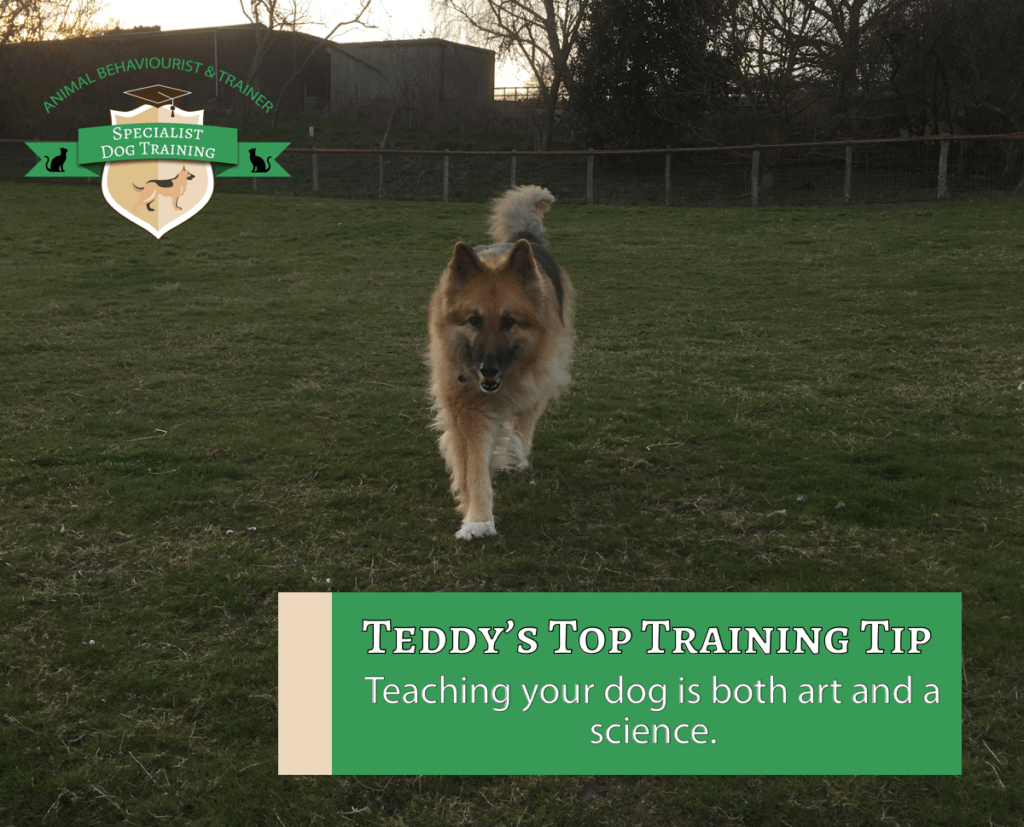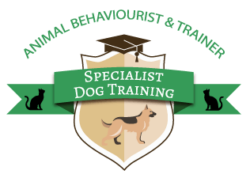
When we teach our dogs to carry out a specific command or exercise, both art and science are at work. The teaching part looks at both the science of why and research to support it and the art is that we must engage fully with what we are teaching our dogs. We need to strive to be a great teacher which means we look at the cause of effect of what we teach our dogs – do they understand – have you made a link between cause and effect (i.e. teaching and learning). Harness your learning to teach your dog – make a secure connection about what you learn and how you teach your dog. Do your research – question it – does it relate to up to date theories of training. Set your goals – clearly understand what you need to teach your dog – does it make sense – if not why not. Increase your achievement – look to stretch what you know and ask questions about why you need to teach your dog this particular exercise or command. Feedback – we all need feedback, and this includes our dogs – consistent feedback on your dog’s actions and performance means that your training will progress and if it is rewarding then the behaviour becomes more positive. Assess your learning – this is where your learning can accelerate – are you ready for feedback and assessments. Cooperative structure – when the whole family is involved with training the dog, and they all work together then the performance of the whole family unit will increase as well as the spirit of mutual responsibility, not to mention changing the dog’s behaviour. Putting it into practice:
- Control your dog’s impulses – teach your dog impulse control.
- Control the dog’s energy – look at the exercise.
- Teach your dog basic skills.
- Reward your dog for good behaviour.
- Build you and your dog’s confidence.
- Give your dog boundaries and structure.
